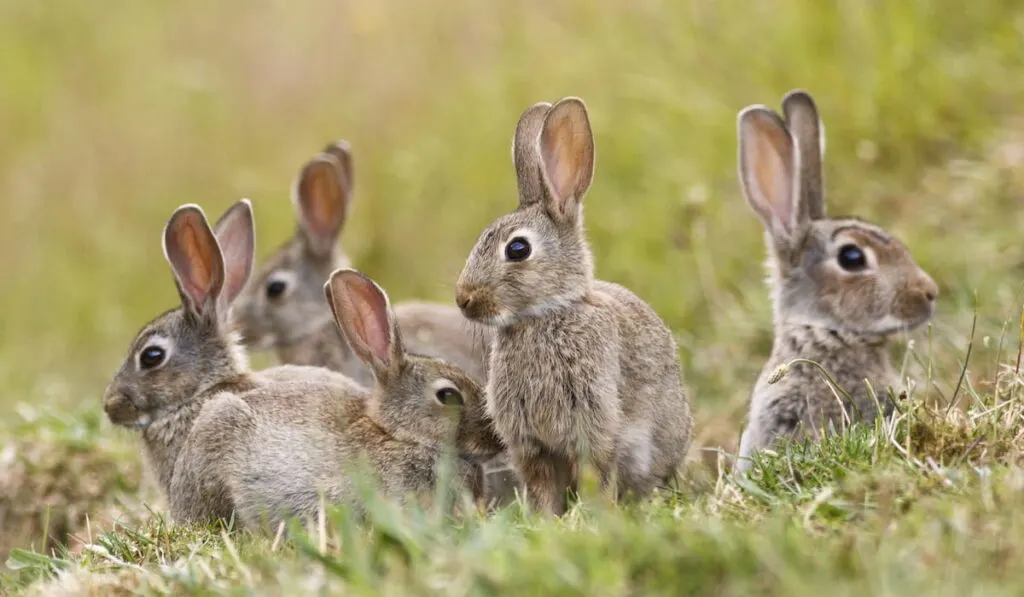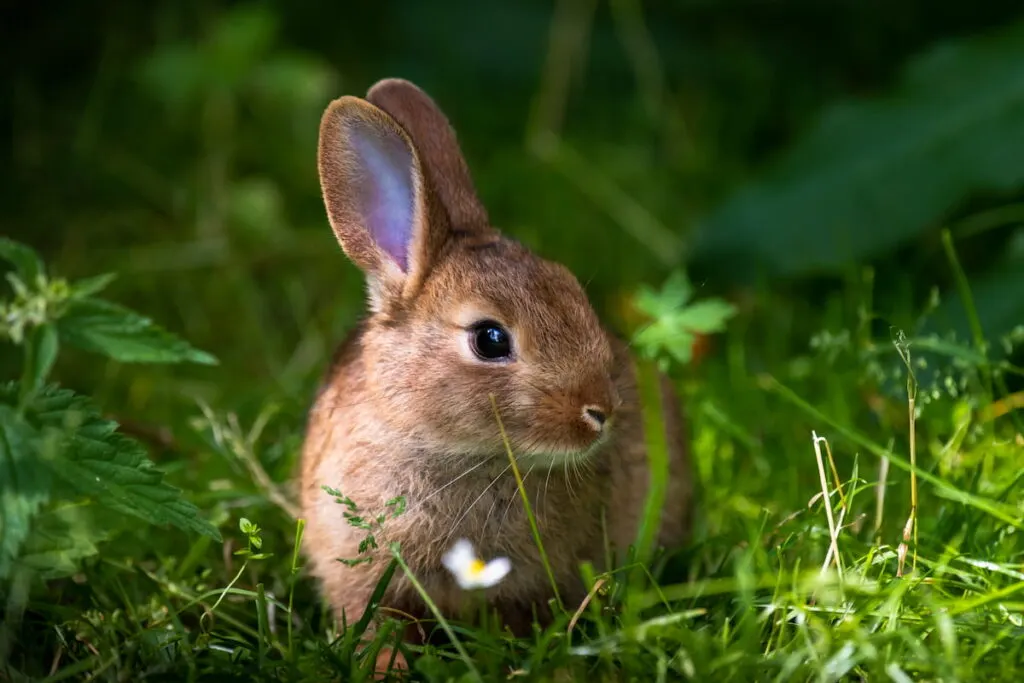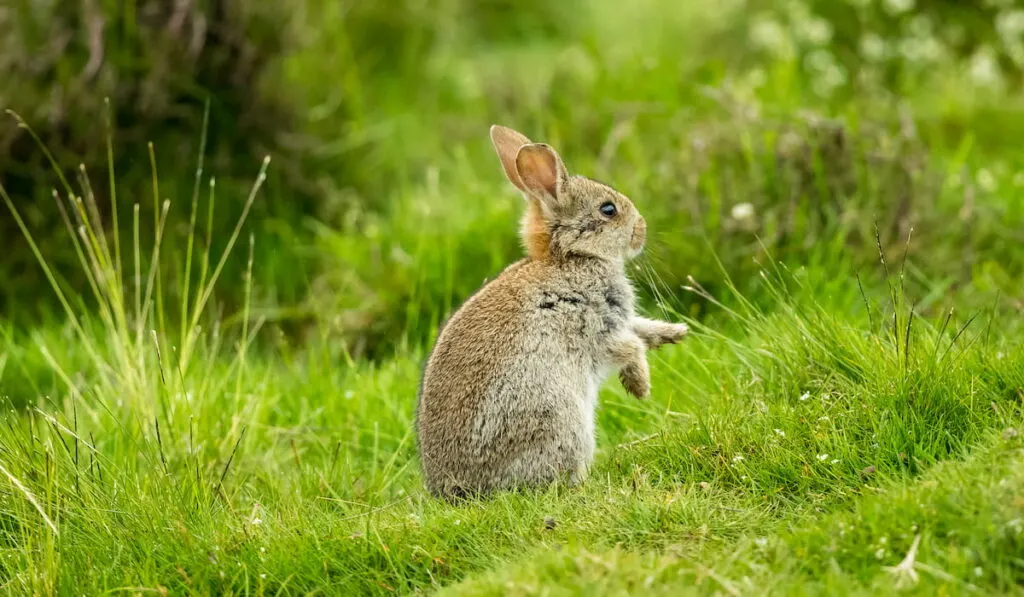People find wild rabbits all the time while they are out camping or on a hunting trip.
You may even stumble on some abandoned baby rabbits while hiking in the woods or, if you live in a rural area, you might find them seeking shelter in an outdoor shed.
Can you raise a wild rabbit?
You can raise a wild rabbit in much the same way that you would raise a domestic rabbit.

The beginning of their time with you, though, will likely be different.
You can do things like give them space and use treats to make them more comfortable and adjust to living around you and in an enclosure more quickly.
While raising domestic bunnies is somewhat different than raising a wild rabbit, many of the principles remain the same.
They need food, water, shelter, and nurturing.
Whether you are raising tame rabbits or wild rabbits, you want them to live a healthy, happy life.
By following a few steps, you can make this happen.
How you raise them will depend on how old they are, the circumstances under which you found them, and the environment you are able to provide.
Here is some good advice to follow if you’re planning on raising wild rabbits.
Table of Contents
Give the Rabbits Some Space to Run
These animals were born and bred in the wild.
That means they have an instinct that is ready to kick in once you try to hold them or stick them inside of an enclosure.
They will probably flip out no matter what you do, so you need to be ready to give them some space.
They aren’t going to be ready for a snuggle on day one.
Do your best to find an area where the rabbit can run. Don’t try to keep it contained.
That’s only going to prolong its feeling of fear and the urge to get away as quickly as possible.
In severe cases, this stress could even trigger your rabbit to have a heart attack and die, so take it nice and easy at the beginning and don’t try to constrain the wild rabbit.

Remove Any Odors Possible
In general, whenever you hold animals, you want to have clean hands and not smell like any food or other animals. That’s a quick way to get bitten.
If your fingers smell like food and wild rabbits don’t know humans want to pet them, they might mistake you for food and take a bite.
Likewise, if you smell like a family dog or a cat, the wild rabbit could consider you a predator and become scared.
Wash your hands before interacting with your rabbit. If you’ve recently eaten anything, give it some time before you approach them.
Use Treats as an Incentive
On the most basic level, wild rabbits will respond to food as an incentive.
It’s a fantastic way to train a wild rabbit, help them become comfortable in their new environment, and get used to you being around.
Using food to make a trail and eventually hand-feed your rabbit will help them build trust.
Use vegetables like spinach, lettuce, carrot slices.
Expect your rabbit to be jittery at first. They are going to be understandably hesitant.
Over time, though, they’ll start nibbling and will be willing to get close to you.
Get On Their Level
Whenever you want to do something with your rabbit, whether it be feeding them or just petting them, you should do your best to get on their level.
Think about it. If you were in front of a towering animal and you didn’t know if they were friends or foes, would you run and hide or stay there smiling?
Instead of standing right next to them, get down on their level by laying down on the ground or sitting on your knees.
You’ll be much less imposing than if standing and the rabbit will be more likely to engage.
Speak in Soft Voices
A wild rabbit will be jumpy, and they’ll scare at a sudden noise or loud voices.
To raise a wild rabbit, it will take some time in a quiet, calm place for them to adjust to their new environment.
Avoid urges to laugh loudly, talk in big voices, and, importantly, try to train any children in the area or interacting with the rabbits to speak and interact in even voices.
Too much noise will make the rabbits nervous.

Pick Them Up Gently
It’s a good idea to give it a while before you attempt to pick up or hold a wild rabbit.
They will likely still see you as a threat or a predator for some time.
By giving them food, speaking to them calmly, and giving them space, they’ll eventually come to understand that you mean them no harm.
When you do want to try picking your wild rabbit up, you should approach them from the front at a low level.
Scoop them up and cradle them in your hands.
Avoid lifting them too high. These animals are used to being close to the ground and will be afraid even if they are up at your waist level.
After trying to hold them, hopefully, they will learn to enjoy being cradled by you and any other humans who may want to hold them.
They’ll see you as a source of comfort and, if you have a treat handy here and there, will know that playing nice will be rewarded.
Keep the Rabbit Safe
Eventually, if the rabbit is in a safe environment, the rabbit will get accustomed to being fed and petted by humans.
They will warm up substantially to your efforts to interact and play with them.
These are still, though, wild animals, so it’s hard to say just how far they will come.
They may still always shy away from being held or pet.
However, if you put in the time, some wild rabbits become almost the same as domestic rabbits.
They’ll come when they see you and will enjoy being pet and held. They can become a great family pet.
